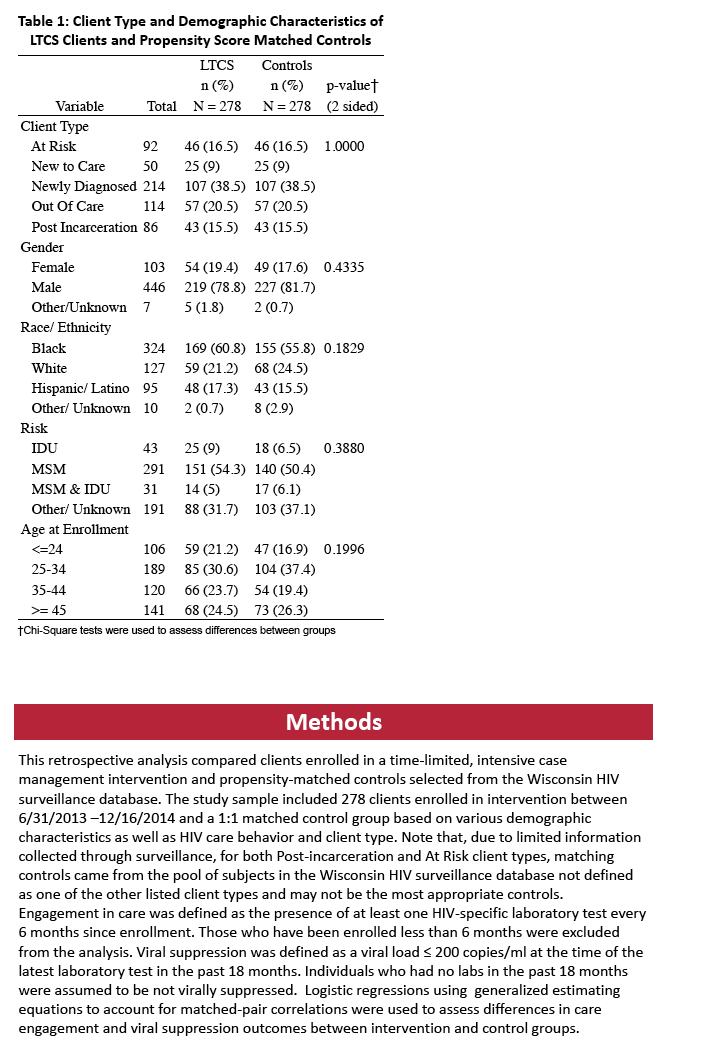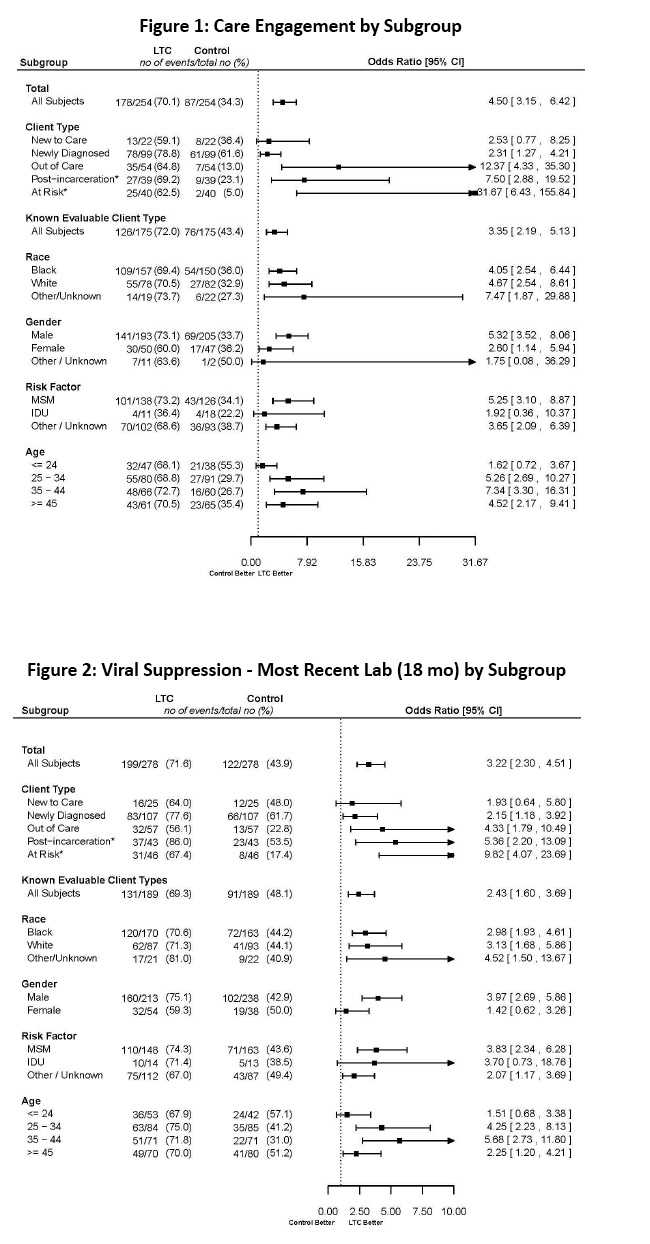 |
 |
 |
| |
Intensive Case Management Improves Engagement, HIV Control in Wisconsin Study
|
| |
| |
IAS 2015, July 19-22, 2015, Vancouver
Mark Mascolini
HIV patients with substantial challenges to engagement in care and viral suppression attained higher rates of both outcomes when assisted by an intensive case management program involving several agencies in the Wisconsin AIDS/HIV Program [1]. This retrospective analysis focused on five groups—(1) people with newly diagnosed HIV, (2) those just released from prison, (3) those not consistently engaged in HIV care, (4) those never engaged in care, and (5) those at risk of falling out of care (called at-risk clients).
The case management program aimed to give HIV clients the knowledge and skills needed to stay engaged in care then reach and sustain an undetectable viral load. Researchers compared outcomes in 278 clients with outcomes in 278 controls picked from Wisconsin's HIV surveillance database. Researchers matched clients to controls according to demographic traits, HIV care behavior, and (when possible) client type. Clients enrolled in the time-limited case management program at some point between June 30, 2013 and December 16, 2014.
University of Wisconsin researchers defined engagement in care as at least one HIV lab test every 6 months since care began. They excluded people in care for fewer than 6 months. The investigators defined viral suppression as a viral load at or below 200 copies at the latest lab test in the past 18 months. They assumed that people with no lab tests did not have suppressed virus.
Among the 278 case-management clients, roughly one quarter were 24 or younger, 25 to 34, 35 to 44, and 45 or older. In those four age groups, proportions of the 278 controls were 17%, 37%, 19%, and 26%. Men accounted for 79% of clients and 82% of controls, blacks for 61% and 56%, whites for 21% and 25%, and Hispanics for 17% and 16%. About half in both the client and control groups were men who have sex with men.
While 70.1% of case-management clients were engaged in care, only 34.3% of controls met the engagement definition. Logistic regression analysis determined that clients had 4.5 times higher odds of engagement in care (95% confidence interval [CI] 3.15 to 6.42). That difference remained significant after the analysis excluded post-incarceration and at-risk clients (72.0% versus 43.4%, odds ratio [OR] 3.35, 95% CI 2.19 to 5.13).
Almost three quarters of intervention clients achieved viral suppression compared with fewer than half of controls (71.6% versus 43.9% (which translated into more than a tripled chance of viral suppression (OR 3.42, 95% CI 3.22 to 4.51). That difference remained significant when the analysis excluded post-incarceration and at-risk clients (69.3% versus 48.1%, OR 2.43, 95% CI 1.60 to 3.69).
The Wisconsin team concluded that intensive case management may be effective in "improving care engagement and viral suppression among individuals with substantial barriers to HIV care." They called for ongoing study to evaluate long-term outcomes well after HIV clients finish the case-management intervention.
Reference
1. Peng M, Westergaard R, Schumann C, Meier A, Hess T, Vergeront J. Improving engagement in care and viral suppression through health systems linkages and intensive case management: preliminary findings from a multi-city implementation project. IAS 2015. 8th Conference on HIV Pathogenesis, Treatment and Prevention. July 19-22, 2015. Vancouver. Abstract MOPED752.
---------------------



|
| |
|
 |
 |
|
|